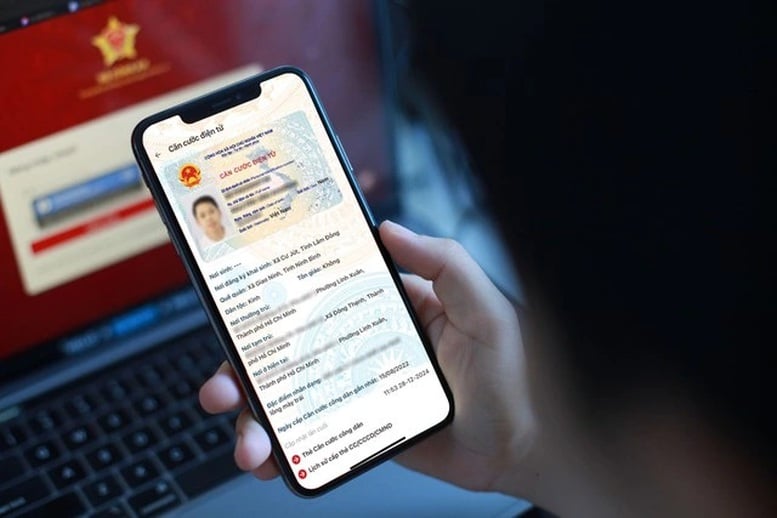
VNeID updates information on citizens' hometowns and residences according to new addresses after the merger.
Colonel Vu Van Tan, Director of the Department of Administrative Police for Social Order (C06, Ministry of Public Security ), said that from July 1, after completing the merger, the country now has 34 provinces and centrally-run cities, many localities have had major changes in administrative boundaries. The two-level government model has officially been put into operation and implemented nationwide.
Along with the operation of two-level local government, the national electronic identification application VNeID has adjusted people's personal information to suit the new administrative unit.
People can access the VNeID application to check their permanent and original addresses after the merger. Instead of displaying according to the old structure (commune/ward, district/city, province/city), the address information has been updated according to new standards in accordance with the current administrative system.
Because the data on VNeID is in the process of being updated and a large number of users accessing the application to view newly updated information, at some times the application reports connection problems or is slow.
In addition, there are cases where the displayed hometown information is not accurate. According to Colonel Vu Van Tan, the process of updating information on VNeID after the merger still needs more time to complete.
The Director of the Department of Administrative Police for Social Order said that local police and officers are urgently reviewing and updating data for the people. People can rest assured and wait to have their information adjusted accurately.
People can look up details of their residential address and hometown according to the new administrative unit on the VNeID application in the following way:
Instead of keeping the previous structure of commune/ward, district/city, province/city, the current address is displayed according to new standards suitable for the two-level administrative model.
Users need to update the VNeID application to the latest version on the App Store or Google Play to accurately look up new address and hometown information on the application.
After updating, you can follow these steps to check that your personal information has been adjusted to the new administrative unit:
Method 1: Log in to the VNeID application, select the paper wallet, select to view detailed information, then enter the password to unlock. Here, people will see information including "place of birth registration", "hometown", "place of permanent residence", "current residence" all have been updated with new information.
Method 2: Log in to the VNeID application, select the ID card/CCCD, enter the password to unlock, select the electronic ID. Here, users will see the data fields that have been updated according to the new administrative boundaries such as: Place of birth; Place of birth registration; Hometown; Permanent residence; Temporary residence; Current residence.
Method 3: Log in to the VNeID application, select the paper wallet, select residential information, then enter the password to unlock. In addition to the personal information fields, this section also displays detailed information of other members of the household.
Phuong Lien
Source: https://baochinhphu.vn/nguoi-dan-yen-tam-cho-doi-de-duoc-dieu-chinh-chinh-xac-thong-tin-tren-vneid-102250710154302283.htm























![[Photo] Gia Lai provincial leaders offer flowers at Uncle Ho's Monument with the ethnic groups of the Central Highlands](https://vphoto.vietnam.vn/thumb/1200x675/vietnam/resource/IMAGE/2025/7/9/196438801da24b3cb6158d0501984818)











































































Comment (0)